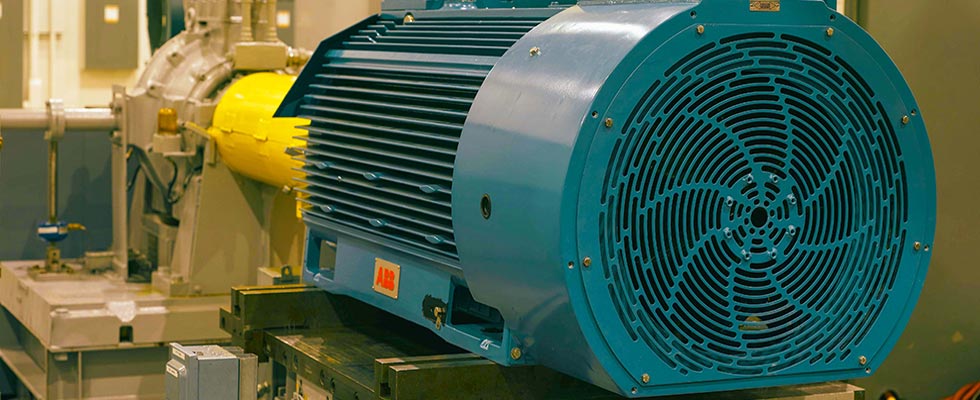
Low-voltage motors are often a preferred choice due to familiarity with products and available services, as well as the typically lower cost of individual components. However, as horsepower (hp) increases, there can be advantages to moving to a medium-voltage motor. Low-voltage motors typically go up to 1,000 hp while medium-voltage motors can cover 250 hp and higher.
Furthermore, in special variable frequency drive (VFD) applications, low-voltage motors can go up to or even over 5,000 hp. This high rating is preferably above the National Electrical Manufacturers Association (NEMA) low-voltage limit of 600 volts but still under International Electrotechnical Commission (IEC) low-voltage limit of 1,000 volts.
Knowing when to select the right motor for an application can save users time, space and money. Here are some areas to consider when choosing between low- and medium-voltage electric motors.
Cabling
In low-voltage motors, as the hp range increases, the size of cabling increases to handle the increase in amps. With conductors being a copper component, this increase in wire gauge can add cost, especially on longer cabling runs across a large facility or over a long distance to a remote pumping station. This increase in diameter also makes turn radii larger, which increases the difficulty in making connections within the terminal boxes. This can be time-consuming and introduce additional risk to the maintenance crew during initial setup of the motor.
A lower current in medium voltage motors allows for smaller cables (leads) even at higher hp. The use of smaller gauge leads reduces the cost per foot for those long-distance connections to remote pumping stations. Also, during the motor connection procedures, the small gauge wires are easier to work with and connect within the motor terminal box. This can reduce the maintenance crew’s time in making the connections and reduce the risk of damage to the cables.
The cost of copper as a commodity and the difference in thickness of leads sized for low-voltage machines versus medium-voltage machines can be so large that this can be the primary determining factor in what voltage service is specified. The higher cost of medium-voltage equipment can easily be offset in applications with long cable runs from distribution.
Size
When space is a consideration, more than motor size should be reviewed as the choice between a low- or medium-voltage motor that has an impact on the components in the entire system.
Low-voltage drives are smaller than medium-voltage drives when variable speed applications play a role in the motor selection. However, above 1,000 hp this ratio starts to flip, and drive size may be comparable or even smaller. Due to lower amps, medium-voltage motors also enable the use of smaller supply side switch gear, supply transformer and controls.
Windings
To prevent short circuits and preserve the longevity of medium-voltage windings, they are commonly produced using a form wound insulation system. The insulation system is sealed using a vacuum pressure impregnated (VPI) system, which fills the voids in the coils to protect from contamination. The coils are organized outside of the stator core to ensure the ideal spacing of turns, which allows for air flow around the coils to improve heat transfer. It is a more labor-intensive process but is well suited to the rigors of the voltage impulses of a medium-voltage system. Additionally, due to the smaller conductors used in the windings, there is the possibility of having more turns, so there is greater flexibility in the electrical design, making it possible to achieve specific performance characteristics.
In low-voltage motor windings with larger diameter conductors, there are more limitations to the electrical design but less need for the precisely ordered coils required to withstand medium voltage. Because of this, low-voltage machines can use a more cost-effective random or mush wound design with a thorough dip-and-bake in varnish that is often coupled with a vacuum impregnation of the winding to ensure that the insulating material fills all voids. The result is a low-voltage insulation system that is capable of exceeding industry standards for longevity while achieving the performance characteristics necessary for a broad range of applications.
Like all good questions, whether to pick a low- or medium-voltage motor for a pump system does not have an easy answer. There are several factors to weigh, including site and installation specifics that will impact what voltage service is best for a given project. When selecting a motor for an application, evaluating these three factors should provide the best all-around motor for the facility.

